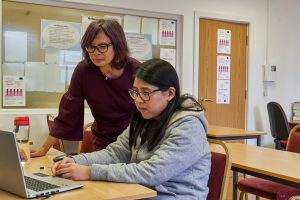Neurodiversity: Building Truly Inclusive Classrooms
Neurodiversity is a term used to describe the wide range of variations in neurological functioning among individuals. These variations can include differences in cognitive, sensory, and motor abilities, such as those found in people with autism, dyslexia, ADHD, and other neurological conditions. In recent years, there has been a growing understanding of the importance of neurodiversity in our society and the need for inclusive environments that embrace and support individuals with these differences.
Understanding Neurodiversity
Traditionally, differences in neurological functioning have been seen as deficits or disorders that need to be fixed. However, the concept of neurodiversity challenges this perspective by recognizing that these differences are a natural and valuable part of our society. Just as we celebrate diversity in culture, race, and gender, we should also embrace and celebrate neurodiversity.
Neurodiversity is not limited to any specific group of individuals; it is a spectrum that includes people of all ages, races, genders, and backgrounds. Each person’s neurodiversity is unique, and it can manifest in a variety of ways, making every individual’s experience different.
The Importance of Inclusive Classrooms
Inclusive classrooms create an environment where all students feel valued, respected, and supported, regardless of their neurological differences. When students experience this sense of belonging, they are more likely to thrive academically, socially, and emotionally. Inclusive classrooms also promote empathy and understanding among students, providing them with important skills that they can carry with them beyond the classroom.
For students with neurodiversity, inclusion means having their needs accommodated and understood. It means being provided with the necessary resources, tools, and support to succeed academically and socially. Inclusive classrooms also foster a positive and accepting attitude towards differences, reducing the stigma and discrimination often associated with neurodiversity.
Tips for Building Truly Inclusive Classrooms
1. Educate Yourself and Your Students
The first step in creating an inclusive classroom is to learn about the different types of neurodiversity and how they can affect students. This knowledge will help you understand your students’ needs and provide appropriate support. It is also important to educate your students about neurodiversity, encouraging them to embrace and respect their peers with differences.
2. Provide Individualized Support
Each student’s neurodiversity is unique, and therefore their needs will be different. It is essential to provide individualized support to meet their specific needs. This can include accommodations, such as extra time for tests, alternative assignments, or assistive technology. Consider creating a plan with the student and their parents to ensure their needs are being met effectively.
3. Encourage Collaboration and Acceptance
Inclusive classrooms foster collaboration between students with and without neurodiversity. This not only promotes acceptance and understanding but also allows students to learn from each other’s strengths and challenges. Encourage peer support and team-building activities to create a sense of community in the classroom.
4. Create a Positive and Accepting Environment
It is crucial to cultivate a positive and accepting environment in the classroom. This includes celebrating differences and promoting a growth mindset. Avoid using language that stigmatizes or belittles neurodiversity and encourage students to use respectful and inclusive language towards one another.
In Conclusion
Creating truly inclusive classrooms that embrace and support neurodiversity is essential for promoting a positive and inclusive school culture. By understanding and celebrating neurodiversity, providing individualized support, and fostering collaboration and acceptance, we can create an environment where all students can thrive and reach their full potential.










